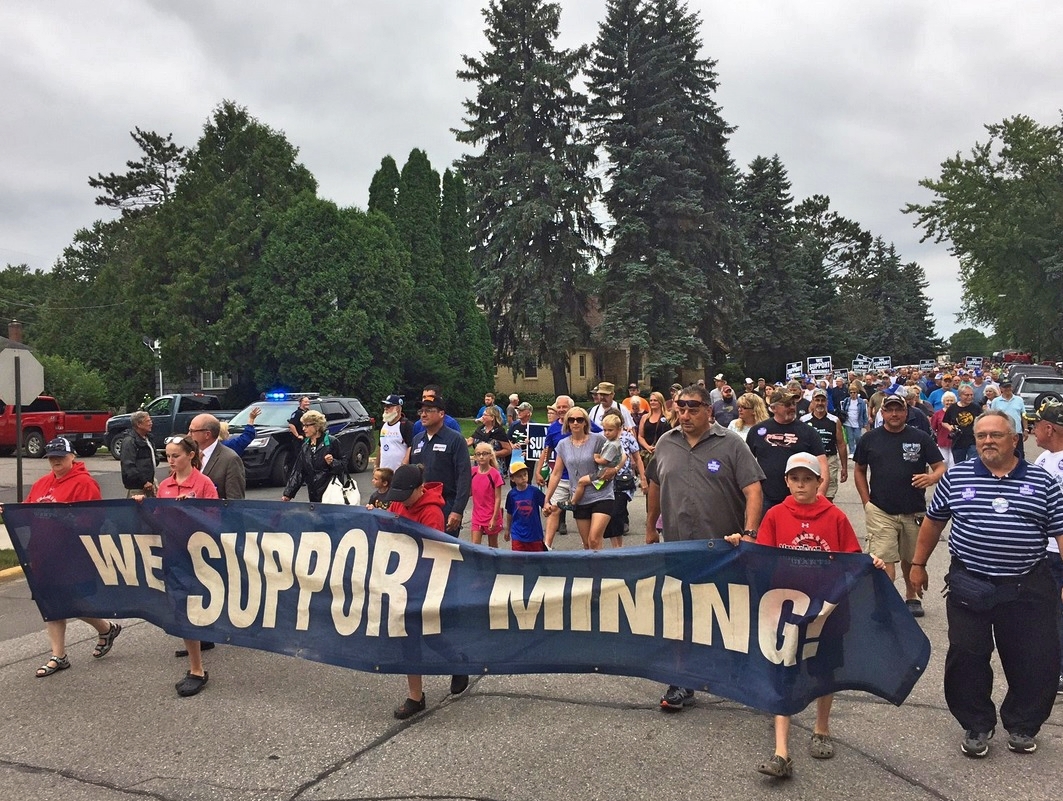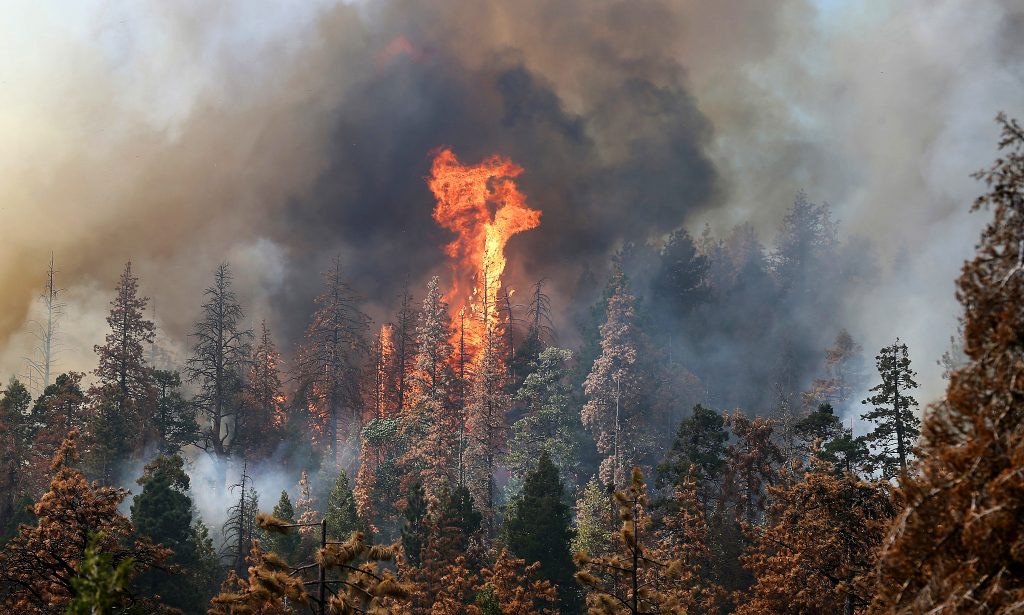The application for withdrawal is the first step in a process that could ban mining projects in these national forest lands, and potentially wreak destruction on local economies.
posted by Marjorie Haun
A U.S. Forester and Bureau of Land Management director may have acted improperly when, in December of last year, they decided to delay, and subsequently withdraw, mineral leases from a region of Minnesota that has a rich tradition in iron ore and taconite mining operations, and has future hopes for copper-nickel mining.
On December 14, 2016, for reasons yet unclear, Kathleen Atkinson, the Regional Forester for the USFS, refused to renew existing mineral leases and simultaneously issued an application with the Bureau of Land Management (BLM) to withdraw 234,328 acres in the Rainy River Watershed. The next day, the BLM State Director of Eastern States, Karen Mouritsen, decided to deny mineral leases to a operating mining interest. It appears that both the USFS Regional Forester and BLM Director may have acted improperly and outside the provisions of the Federal Land and Policy Management Act (FLPMA) in their denials of leases to ongoing mining operations.
The Forest Service decided to prepare an environmental impact statement (EIS) on a proposal that would withdraw federal minerals from access in the Superior National Forest. This action has stirred up a firestorm of local opposition in the Iron Range, located in northern Minnesota. The application for withdrawal has put a two-year moratorium on mineral development in a region that is dependent on the iron ore and taconite mines that have given local communities an economic foundation for 130 years. The application for withdrawal is the first step in a process that could ban future mining projects in these national forest lands, and potentially wreak destruction on local economies.
Environmentalist special interest groups are pushing for the mineral withdrawals, claiming the copper-nickel mines will contaminate waterways and drive away tourists. Such claims are largely unsubstantiated, and–as in so many cases–it appears that environmentalists and outdoor recreation interests are asking the government to eliminate resource development in an all-or-nothing proposal in which the winner is tourism and the losers are thousands of Minnesota families and towns built on a legacy of mineral development.
As the Executive Summary (below) indicates, the hasty application to withdraw was ‘procedurally flawed,’ ‘devoid’ of proper documentation, lacking in ‘statutorily required’ information, lacking coordination with local governments, and neglectful of various private, local, and state stakeholders–especially Minnesota’s school trust mineral holdings.
The BLM has the final say in the mineral leasing process, and as an agency under the purview of the Interior Department, ultimately answers to Secretary Ryan Zinke. Following are comments prepared by the Northern Counties Land Use Coordinating Board of Minnesota asking the Secretary to cancel the errant withdrawal application and restore mining activities in this ore-rich region of the state.
Dear Honorable Secretary Zinke:
The Northern Counties Land Use Coordinating Board (NCLUCB) of Minnesota is submitting the enclosed report entitled Notification of Procedural and Statutory Deficiencies; Request for Cancellation of Withdrawal Application and Immediate Termination of Land Segregation as part of the Bureau of Land Management’s (BLM) land withdrawal comment process.
NCLUCB specifically is requesting that the Secretary of Interior to cancel the December 14, 2016 application for land withdrawal by Kathleen Atkinson, Regional Forester of the United States Department of Agriculture, Forest Service, and to terminate the segregation of 234,328 acres of lands set aside in three NCLUCB member counties.
The justification and rationale for this request is found in the attached document.
Federal law governing withdrawals of public lands contains specific, preconsultation and consistency-review responsibilities that agencies must fulfill with local governments, prior to initiation of the withdrawal process. None of our members have received meaningful contact from the agencies during the current action.
The Federal Land Policy and Management Act (FLPMA) and Department of Interior Policies are clear that authority to oversee land withdrawal processes must reside with the Secretary of Interior, oversights that have not been met and continue as transition occurs into the Trump administration.
The attached comments document numerous procedural, technical and regulatory issues surrounding the proposed land withdrawal and process, and support our request for the current Secretary of the Interior to terminate the current withdrawal process and determine what further actions, if any, need to be taken.
With this transmittal we are requesting to meet with the Secretary or an appropriate, signatory-level Department of Interior Deputy to review the details of our findings.
EXECUTIVE SUMMARY
Federal statutes for withdrawal of public lands contain specific requirements governing delegation, procedures for preapplication consultation with local governments, and minimum technical and information standards.
Stillwater Technical Solutions (STS) conducted a statutory, procedural and regulatory analysis of a mineral land withdrawal application proposed prepared by US Forest Service and currently under review by the Bureau of Land Management for a region in northeast Minnesota.
Our research concludes the withdrawal application to be procedurally flawed, devoid of documentation required from the preapplication consultation process, and lacking information that could only be obtained though statutorily required, consistency review consultation with local governments.
Particularly noteworthy are neglect for intermingled federal, state and private surface and mineral holdings within the proposed withdrawal boundary; disenfranchisement of local governments through non- contact; potential future conflicts with Minnesota school-trust mineral inholdings known to occur throughout the withdrawal area, and a significant departure from the standards of the Data Quality Act.
This report also presents similar, massive land withdrawals in Arizona that failed judicial review, and we document flaws in the Federal Register notification and comment process, most notably that BLM is refusing to accept electronic comments.
Because the administrative record is so glaringly deficient, lacking in procedural oversight and devoid of minimum standards, the USFS withdrawal application cannot be considered as procedurally legitimate or technically feasible. For this reason, STS recommends the current Secretary of Interior cancel the application and immediately terminate the segregation of 234,328 acres of lands set aside as part of the application process, pending review and resubmittal of an adequate withdrawal application.
[wp_ad_camp_1]
The Northern Counties Land Use Coordinating Board
The Northern Counties Land Use Coordinating Board (NCLUCB) of Minnesota is a collaboration of eight (8) Minnesota county governments created to review, assist and actively participate in land use planning activities and policy making. Established in 1983 under the joint powers act, our members have local jurisdictional authority over 30% of Minnesota’s land area, 41% of forest lands, 43% of regulated surface water, 46% of state wetlands, 5% of the population, and 4% of the aggregate, net tax capacity.
Issue Summary; Action Requested –
With this submittal, NCLUCB is requesting an immediate review, intervention, and specific action from the Secretary of Interior (Secretary) of a federal land withdrawal application process currently being undertaken by the Bureau of Land Management (BLM) in the northern Minnesota region.
•In support of this request, we are requesting the Secretary to review BLM’s compliance with the statutory withdrawal provisions of the Federal Land Policy Act in 43 USC 1714(a), the withdrawal implementing regulations in 43 CFR 2310.1(a)(1) and 43 CFR §2310.1-1, and the delegation requirements found in Department of Interior’s own Departmental Manual Part 209, Chapter 7.
•We specifically request the Secretary to investigate a flawed land withdrawal application submitted on December 14, 2016 to BLM by Kathleen Atkinson, Regional Forester of the United States Department of Agriculture, Forest Service (USFS), to cancel that application for cause, and to immediately terminate the segregation of 234,328 acres of lands set aside as part of the application process1 (Attachment A).
•Our research concludes the USDA withdrawal application to be procedurally flawed, devoid of documentation required from the preapplication consultation process, and lacking information that could only be obtained though statutorily required, consistency review consultation with local governments.
•For its part, the application itself was hurried, is devoid of references, and lacks fundamental data and scientific standards mandated for proposed federal actions under the Data Quality Act. Similarly, the application is deficient of basic information required to understand how human systems, customs, cultures, local economies, and governmental prerogatives will be protected in the event the withdrawal process should proceed.
•If approved in its flawed state, the massive segregation of intermingled federal, state and private surface and mineral holdings within the proposed boundaries will result in regional economic distress, ongoing disenfranchisement of local governments, and future conflicts with Minnesota school-trust mineral inholdings known to occur throughout the area of the proposed withdrawal.
Background
On December 14, 2016 USFS issued its non-consent for renewal of long-standing mineral leases for a currently operating regional mining concern That same day, the Regional Forester of USFS filed an application for withdrawal of a 234,328 acre parcel in the Rainy River Watershed adjacent to the existing Boundary Water Canoe Area Wilderness (BWCAW) lands with the Bureau of Land Management (BLM).
On December 15, 2016 the BLM State Director of Eastern States, Karen Mouritsen, issued her decision to deny mineral leases of an ongoing mining concern based upon a March 8, 2016 opinion by a Solicitor of the Department of Interior.
The public record indicates the mineral-lease renewal applications were submitted to BLM on October 22, 2012, and that BLM had not acted upon the applications for a duration of about 1,500 days when BLM State Director Mouritsen issued her December 2016 decision to deny the On January 19, 2017 BLM published its notification of intent to pursue the withdrawal in the Federal Register, with Karen Mouritsen acting in her role as BLMs State Director for the Eastern States Office.
The following are summaries of the key points in comments provided to Secretary Zinke by NCLUCB:
•Review, processing and oversight of the withdrawal application process by State Director Mouritsen is contrary to the statutory mandates in the policy statement of the Federal Land Policy and Management Act and the Department of Interior, Departmental Manual Part 209, Chapter 7:
•USFS and BLM have failed to fulfill pre-application consultation steps and responsibilities to local governments required in 43 CFR §2310.1(a)(1) and 43 CFR §2310.1-1:
•The application by USFS demonstrates a remarkable lack of confidence, predetermining that commonly-available environmental controls and existing statutory and regulatory frameworks are inadequate to protect the natural environment, leaving withdrawal of working public lands from their primary use as the only satisfactory environmental remedy:
•In its application, USFS errantly prioritizes environmental values and sequestration above the FLPMA doctrines of multiple use, 7 sustained yield, 8 and the hierarchy of principal or major uses 9 – all of which prioritize balanced, beneficial and working use of public lands as a priority over withdrawal:
•The proposed withdrawal would have negligible effect at curtailing mining, as approximately 190,321 acres of pre-existing surface and subsurface state and private lands would remain within the 234,328 acres proposed for withdrawal:
•In its Notice of Application for Withdrawal and Notification of Public Meeting, the BLM inexplicably prohibited submission of comments by email:
•The comments submitted during this comment period are being made available for review at the BLM’s Eastern States Office, located in Washington, No opportunity for public review of the comments is being made available for review within the Minnesota counties that would be affected by the proposed withdrawal:
NCLUCB Comments on BLM Minnesota application for withdrawal on Scribd
Related news:
Minnesotans protest Forest Service land withdrawal which will halt key mining projects
Forest Service ‘stall tactics’ threaten Minnesota jobs, education funding
Federal withdrawal of resource-rich lands threatens Minnesota jobs, way of life
Free Range Report
Please support Freedom in the American West with your generous donation by clicking HERE
[wp_ad_camp_3]
[wp_ad_camp_2]




NO MINE NO MINE NO MINE!
I want untainted water in perpetuity!